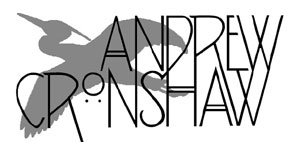
- Andrew Cronshaw website -
- Andrew Cronshaw MySpace -
- Cloud Valley Music website -
- Andrew Cronshaw website -
- Andrew Cronshaw MySpace -
- Back to Reviews Introduction page -
Written in
Folk Roots issue 105, 1992
MILLADOIRO
Castellum Honesti
Green Linnet GLCD 3055 (1991)
LLAN DE CUBEL
Na Llende
FonoAstur FAL 8718 (Vinyl LP,1990)
XARÉU
L'Aire Les Castañes
FonoAstur FAL 8722 (Vinyl LP, 1990)
Castellum Honesti is the latest in a long line of releases, including
some on CBS Spain, by Galician band Milladoiro; I think its first licensed to a
US label, though recorded in Dublin's Windmill Lane studio. Pity the liner notes
couldn't have been more informative to a presumably new English-speaking
audience; the blurb reads like a press release (not surprisingly, since it was
written by their US agent).
One of the strengths of Milladoiro is that unlike
some of the other Galician bands at the top of the concert pay scale, they run
to the expense of having two gaiteiros, though they're not much in evidence on
this album; much of the distinctive Galician sound comes from two sets of pipes
often playing in parallel thirds, and the traditional town pipe bands which play
at village fiestas usually have two or three gaitas, bass drum, a small snare
side-drum and tambourine. While other concert bands, such as Na Lua and Brath,
are rockist, avowedly attempting new directions in Galician music and making the
big noise often needed in outdoor, town centre shows, Milladoiro goes for a more
chamber, intellectual treatment of the tunes, with less of the enjoyable
percussive thump, clatter and pipe skirl heard in traditional bandas de gaitas,
but a wider instrumentation, some drawn from Irish music.
If not particularly avant-garde, Milladoiro is no
more stuck in a particular period of time than is the Chieftains, with whom it
is often compared and has been known to collaborate, for example on the album
A Chieftains Celebration. I'd like to hear more of the fire and passion of
that recording in Milladoiro's own recent work; the full-bloodedness often in
evidence on earlier releases - and heard here, for example on the up-tempo A
Farruquiña, but which can also imbue slow tunes with something more than
elegant limpid purity - seems to be ebbing away. This is Galician music, not
Irish or New Age; perhaps an injection of the region's powerful and energetic
harmonising vocal tradition might refocus things; after all, the Chieftains
incorporate the occasional vocal. Still, after the mere 36½ minutes I'm left
wanting more.
To the east of Galicia along Spain's northern coast
lies the region of Asturias. As one might expect, between the two regions there
are similarities in musical culture, including use of the bagpipes. Lately a
number of bands have arisen focussing on Asturian music in the light of revivals
elsewhere. Thus Llan de Cubel uses chording, and bouzouki, strongly reminiscent
of the style of Donal Lunny. Bouzouki player Elías García, who is also one of
the two gaiteiros, knows what he's doing, though, and the result is not the
superficial apeing of foreign styles but an absorption of good ideas on this
very strong album. There even seems to be a slight Chinese feel on Nel Campu
Ñacen Flores. After an instrumental first side of the LP vocals suddenly
burst in on S2 Tr1, Cantar Del Ayeran Que Perdio La Guerra. The band is a
five-piece, using - as well as gaitas and bouzouki - flutes, guitar, fiddle,
accordion and side-drum to make a very integrated sound in distinctive tunes
played with life and style.
I'd no sooner written an enthusiastic review of
the album by another Asturian band, Ubiña, than it split up. Four of its members
- lead singer and elegant exponent of Asturian castañuelas Marta Arbas, Pedro
Pangua (gaita, guitar, percussion), Jose Manuel Lopez (accordeon) and Michael
Lee Wolf (guitar, fiddle), have now regrouped as Xaréu. Most discernible foreign
influences here come from US-born Lee Wolf. Material includes a muñeira, a xota,
a pasodoble (Pasodoble de Pittsburgh by Lee Wolf), an Italian tune and
the Irish Monaghan Jig. As with Llan de Cubel, the result is fresh and
distinctive; a living tradition can support many influences and directions -
indeed that's what moves it forward - and new growth is definitely showing green
in Asturias.
© 1992
Andrew Cronshaw
You're welcome to quote from reviews on this site, but please credit the writer
and fRoots.
Links:
fRoots - The feature and
review-packed UK-based monthly world roots music magazine in which these reviews
were published, and by whose permission they're reproduced here.
It's not practical to give, and keep up to date,
current contact details and sales sources for all the artists and labels in
these reviews, but try Googling for them, and where possible buy direct from the
artists.
CDRoots.com in the USA, run by
Cliff Furnald, is a reliable and independent online retail source, with reviews,
of many of the CDs in these reviews; it's connected to his excellent online magazine
Rootsworld.com
For more reviews click on the regions below
NORDIC
BALTIC
IBERIA (& islands)
CENTRAL & EASTERN EUROPE, & CAUCASUS
OTHER EUROPEAN AMERICAS OTHER, AND WORLD IN GENERAL
- Back to Reviews Introduction page -